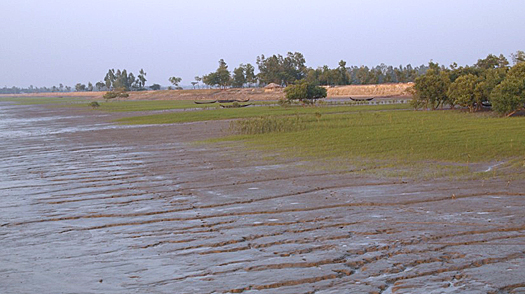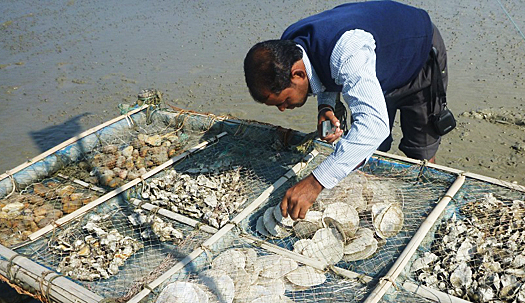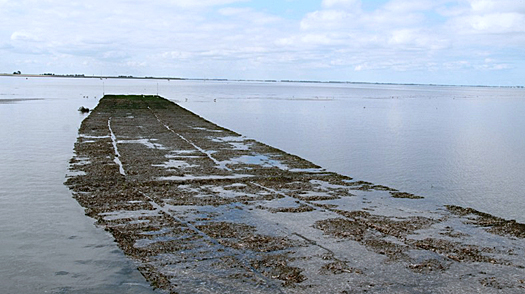Dutch consortium shows oyster reef potential for coastal defence and food production in Bangladesh

Engineering firm Royal HaskoningDHV, University of Chittagong and Wageningen University (Imares and LEI) presented the first results of the eco-engineering project Ecobas in Bangladesh.
The results show that oyster reefs are a good solution for sustainable coastal defence and aquatic food production. These reefs will contribute to improved safety for humans against coast erosion and flooding, and also deliver a sustainable source of aquatic food.
Eco-engineering: coastal defence and food production
The Ecobas project is testing the technical, economical and sociological feasibility of the Building with Nature concept on the southeast coast of Bangladesh. In this concept, coastal defence is combined with the sustainable production of oysters.
Shells like oysters naturally create three dimensional reefs, which influence the current and with that the erosion and sedimentation of the coastal area. This can diminish the maintenance costs for hard structures and enhance biodiversity. In the Netherlands small and large scale pilots with oyster reefs have been tested in the Oosterschelde and it showed that enhanced sedimentation occurred behind the reef.

Sustainable oyster production in intertidal area
On the southeast coast of Bangladesh local minority people collect oysters and other bivalves and gastropods from the intertidal area. Since only a part of the oyster reef can be harvested to ensure its continuity, it is therefore important to consider the way the oyster harvest is managed in order to prevent over-exploitation.
Therefore, the local community needs to be aware of spat settlement, oyster growth and survival and the effects of the reef. The project shows that there are still a number of challenges related to the technical design and the management of the reef for the sustainable exploitation and sales of oysters.
Possibility of mangroves
Besides contributing to safety and providing a source of food, oyster reefs can also stimulate mangrove growth by increased accretion and the stabilization of tidal flats.
This is interesting because of the additional possibilities that mangroves offer for coast protection and other ecological and economic benefits.
Upscaling of pilot
In the next phase the pilot will be up-scaled. For this, structures will be constructed and installed along the coasts of Kutubdia and Maheshkhali Island. The technical, ecological and economic feasibility will be assessed based on the outcomes of the pilot project and presented in a workshop December 2014.
Building with Nature: soft engineering solutions
The classic approach for flood defence is still the constructing of fixed structures such as revetments or groynes. The question that arises is whether solely the use of pure hard-engineering solutions is sustainable.
A concept that can be complementary to these hard-engineering solutions is under development in the Netherlands and called the Building with Nature. This concpt uses the natural dynamics of the ecosystem to create flexible and sustainable solutions while enhancing nature values.

One of the Building with nature pilot projects was the construction of a oyster reef in the Eastern Scheldt, the Netherlands.
The Ecobas project is financed by the Dutch Partners for Water Programme that supports activities by the profit and non-proft Dutch water sector abroad.
This news items was first published on the websites of Wageningen University and Royal HaskoningDHV.
More information
Royal HaskoningDHV
Amersfoort, the Netherlands
+31 88 348 20 00
www.rhdhv.com
IMARES Institute for Marine Resources and Ecosystem Studies
Wageningen, the Netherlands
+31 317 487148
www.wageningenur.nl/imares
LEI Wageningen UR
The Hague, the Netherlands
+ 31 (0)70 335 83 30
www.wageningenur.nl/lei
University of Chittagong/Institute of Marine Sciences and Fisheries
Chittagong, Bangladesh
+88 1817-227288
www.cu.ac.bd/ctguni
Building with nature - Ecoshape
Dordrecht, the Netherlands
+31 78 6111 099
ww.ecoshape.nl



